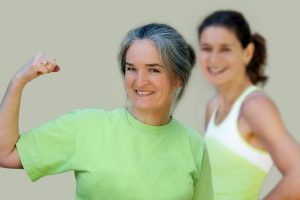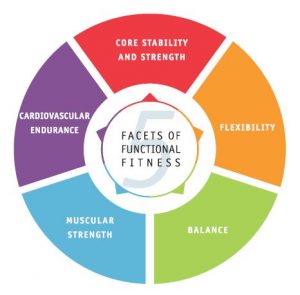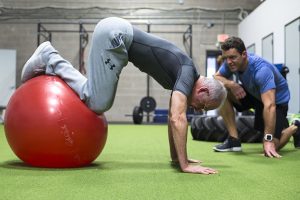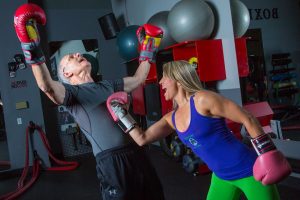From Concept to Action: 7 Steps Toward Functional Fitness
 If you want to keep old age at bay, understanding functional fitness and its five dimensions is a start. How do you go from that concept to a program that works for you? Here’s how to think it through:
If you want to keep old age at bay, understanding functional fitness and its five dimensions is a start. How do you go from that concept to a program that works for you? Here’s how to think it through:
- Set long-term goals based on an honest self-assessment. No fudging! How easy or hard it is to get through your daily tasks? Are you hampered by weakness, stiffness, shortness of breath or fear of falling? Do you suffer from chronic aches and pains? Is excess weight undermining your health or limiting your activities? Consult your doctor about any chronic health conditions, past injuries or other issues that could restrict your activities.
- Target areas for improvement. Functional fitness has five dimensions: core strength and stability, flexibility, balance, muscular strength, and cardiovascular endurance. Which ones are not being addressed by your current activities? On which aspects of functional fitness do you need the most work? As you get into your program, a skilled trainer or physical therapist can help you delve deeper into the root causes of pain, stiffness, or dysfunctional movements.
- Learn a few basic fitness principles. You don’t need to get on board with the latest fitness fads or know dozens of exercises. But it IS important to realize, for example, that a lack of core strength can contribute to back pain or a tendency to fall, that aches and pains may be due to tightness elsewhere in the body, and that no one kind of exercise can do it all. If you need a concise overview of fundamentals, check out Just Move!, the fitness guide I wrote for just that purpose.
- Know yourself. Are you a self-starter, or do you need a buddy, trainer or coach to help you stick to a workout schedule? Do you like the focus and flexibility that come from being active on your own, or do you thrive with the energy and support of a group class? Maybe you’re the competitive type who’s driven to achieve a goal, maybe not. A program created with your personality and preferences in mind will be easier to stick with.
- Build the fitness habit. Willpower can get you started; habit will keep you going. Start with regular stretching and walking on alternate days, even if it’s only 5 or 10 minutes at a time to start. Then ease into other activities. If you want to progress, consistency is key.
- Make it a priority. If you’re willing to give it an honest effort, you can improve your functional fitness in an hour a day, five or six days a week. Last week’s post talked about ways to address each dimension of functional fitness. Think about the combination of activities that would work best for you. Then commit to that plan. Put it on your calendar and think of each session as an appointment with yourself.

- Progress one small step at a time. Don’t get fixated on your long-term fitness objectives, and don’t try to make big leaps. Instead, focus on the next step, adding exercise time or intensity in small increments. That way your goals will be attainable and each one will pave the way for the next. Small changes add up to big improvements over time.
Image: Galina Barskaya/Fotolia/Adobe Stock
 My last post discussed how
My last post discussed how  nal fitness is a phrase that’s been kicking around for some years now. In fact, it regularly shows up on those lists of top fitness trends we see every January.
nal fitness is a phrase that’s been kicking around for some years now. In fact, it regularly shows up on those lists of top fitness trends we see every January.